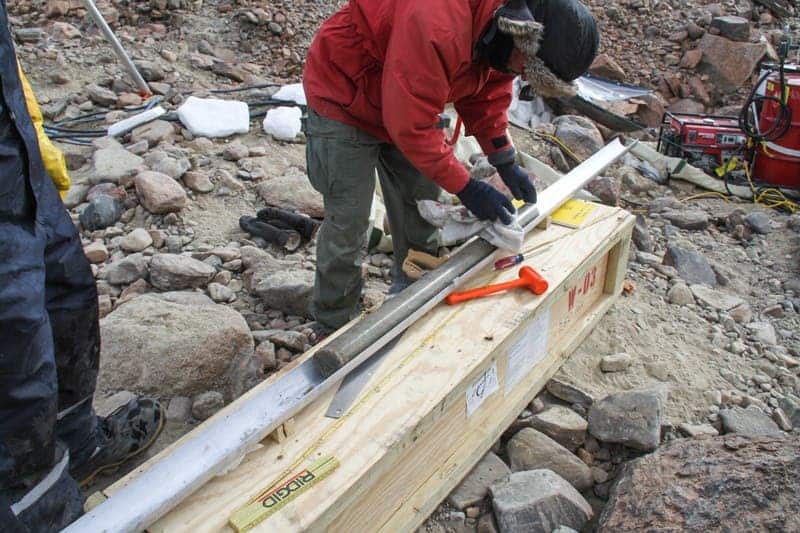Ice cores found buried at the South Pole often contain bubbles that can offer information about the Earth’s previous atmosphere, sometimes even dating back to millions of years. A team of scientists has recently unearthed one such ancient ice core in Antarctica’s Ong Valley. It is possibly the oldest frozen evidence of the Earth’s past atmosphere known to humanity, offering information about what our planet was like 5 million years ago.

Generally, ice cores last up to 800,000 years, and finding a million-year-old core is considered very rare — which is what makes this new find so special. The recovered ice sample on the other hand is composed of two different sections; an older layer aging 5.1 million years and a younger layer dating back to 2.95 million years. The length of the core sample is 9.4 meters (371 inches) and it is believed to have formed during the Pliocene era (time period between 5.3 to 2.5 million years ago).
According to the researchers, this unearthed piece of ice could unravel various unknown mysteries of ancient Earth.
Ice cores are frozen remains of ancient atmosphere
Old ice cores are of great importance because studying such samples allow scientists to create a timeline of past atmospheric events and even predict future environmental changes. For instance, the recently recovered five million-year-old ice core might have bubbles containing information about Earth’s atmosphere at a time when CO2 concentration and the average temperature were much higher than they are at present, which could give us clues on what to expect as global temperatures continue to rise.
“Glacial ice is a well-known paleoclimate archive. Great efforts have been made to find ice older than 1 Ma since the paucity of ice beyond million years of age creates uncertainties for future climate predictions,” the researchers note.
By studying such bubbles, scientists could analyze the changing gaseous composition of the ancient atmosphere, atmospheric changes that would have unfolded over the course of time, and the different factors that have triggered those changes. These findings could further provide them with hints to the big atmospheric events of the future (since global temperature and carbon emissions are also currently on a rise). This is why many international research groups keep looking for old ice cores in Antarctica despite the hardships of their search.

However, the extraction of old ice cores is a complex process requiring years of research and huge sums of money. Ice core seekers have to continuously drill deep into Earth under bone-chilling weather conditions and they could never guarantee the success of their operations. Even if you are lucky enough to find an ancient ice core, the next big challenge is to keep it protected from contamination. If an unearthed sample comes in contact with any rock on the surface, it may get compromised.
So how did scientists calculate the age of the ice core?
Lead researcher Marie Bergelin and her team were aware of a 2016 research that hinted at the presence of “debris-rich ice” dating back to more than a million years beneath the glaciers in Ong Valley. After some years of fieldwork and research, they finally found and extracted the ancient ice core during the 2017-2018 field season. However, they have been collecting glacial rock samples from 2011-2012.

Instead of using traditional methods such as a carbon-isotope study, Bergelin et al. developed a new model to predict the age of the core. This new model analyzed the accumulation of rare isotopes such as neon, beryllium, and aluminum in the ice. The researchers noticed that the concentration of isotopes was not uniform in the core, and based on the same they discovered two different layers; one 4.3 to 5 million years old and the other 2.9 million years old.
If the new dating model developed by the researchers is accurate, the recovered ice core can be used to create a timeline of atmospheric events dating back to five million years. This could further help us predict our environment’s response to the ongoing climate crisis.
The study is published in the journal The Cryosphere.









